The Musée d’Orsay is the second-largest museum in Paris and trust me, there’s a ton of incredible stuff inside. You’ve probably heard that it’s the holy grail for Impressionism—no argument there. But if you’re gonna hit this place up, which paintings should you absolutely not miss? Don’t worry, we’ve got you covered. In this article, we’re breaking down the must-see masterpieces at the Musée d’Orsay.
Pro Tip: Planning your visit to the Musée d’Orsay in Paris? Bookmark this post in your browser so you can easily find it when you’re in the city. Check out our Musée d’Orsay tours for skip-the-line tickets and a guided tour of a museum most visitors miss, plus the best restaurants near the Musée d’Orsay.
Most Famous Artwork To See at Musée d’Orsay
The Musée d’Orsay is Paris’ second largest museum and houses the most famous impressionist artwork in the world. Sadly, most visitors miss out on this art gem. But not you! As you get ready for your visit, also check out the best restaurants nearby.
In this article, we’re counting down the must-see paintings and why you should see them. You’ll definitely be prepared for your visit! Prefer to discover the museum with skip-the-line tickets and a passionate local guide? Check out our Musée d’Orsay tours. Here are the top things to see at Musée d’Orsay!
Not ready to book a tour? Find out how to visit the Musée d’Orsay.
10. Women Ironing
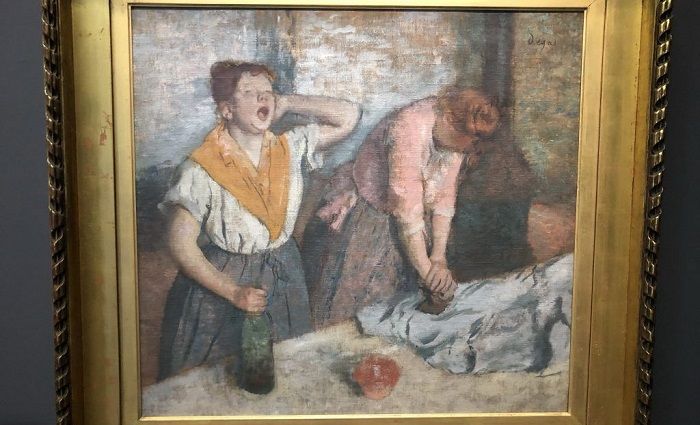
Edgar Degas
Edgar Degas has captured the ideal genre moment in this painting: women ironing. Looking at this painting, we can travel back in time and look through a window into a particular person’s life.
Degas, like Manet, was a classical painter who loved to paint ballet dancers, racehorses, and working women. While he dismissed the idea of painting in Plein air, which was a central theme of Impressionism, he is considered an impressionist. This is because of his fondness for modern themes, loose brushwork, and capturing the fleeting moment, which was also central to Impressionism.
In the painting, you can see two women in a working-class setting. One of them yawning and the other ironing. The picture represents a very unflattering look into the lives of these women.
Degas, while believing in catching the fleeting moment, obviously did many preparatory sketches to ensure the work was perfect. You’ll notice the first woman whose yawn has been perfectly captured. You can tell she’s exhausted, whether from the heat or the wine she’s drinking. The other woman’s head is pointed down in concentration as she irons the clothes with her second hand pushing down hard to work out those wrinkles.
During his lifetime, Degas was loved by some and not by others. While he was a classicist, he felt that the Accademy was too rigid. So, he joined forces with the impressionists early on. He is considered one of the founders of Impressionism and, while he had no formal students, he was known to have later influenced many a painter. He was especially admired by Henri de Toulouse- Lautrec.
9. Poppy Field
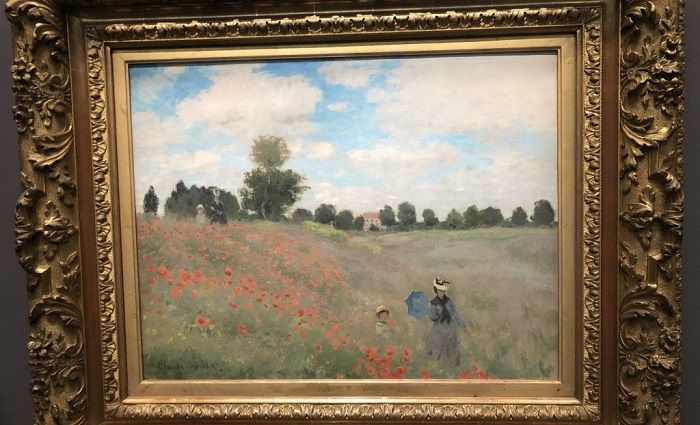
Claude Monet
In this painting, Monet captured a moment of peace and harmony. It has a calming effect and brings to mind pleasant thoughts of spring. Monet returned from England in 1871 and moved to Argenteuil where he had many happy years. Nowhere is that more clearly depicted than here.
In the painting, you can see a woman and child in the foreground walking down a gentle slope with red, poppy flowers on their left. It is assumed that this is his wife Camille and their son Jean. There’s another couple at the top of the hill, but they don’t seem to be connected with the figures below.
The scene is probably one taken close to where they lived at the time given the people wearing middle-class fashion and the nice villa in the background a nice villa, which is where they seem to be coming from.
The painting was exhibited in 1874 at their independently organized art show, which is where the name Impressionist was first used by art critic Louis Leroy. The idea behind it was that this new style of painting was meant to prioritize the immediate impression of the scene.
This was contrary to the established idea of painting back in the day of looking for a deeper meaning. This interpretation seems to be on point with this painting by Monet. What do you think?
8. Camille sur son lit de mort
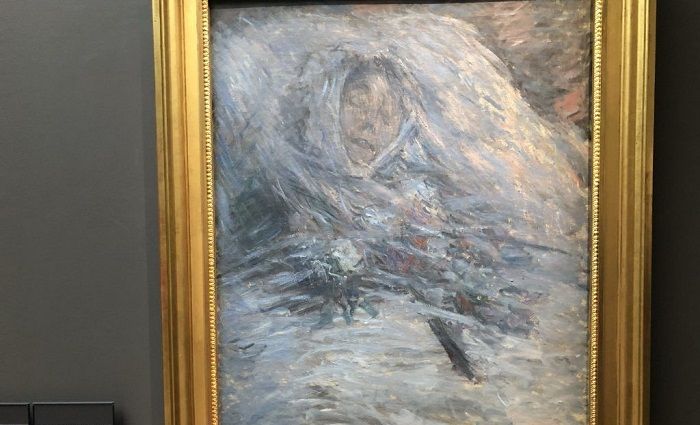
Claude Monet
Claude Monet, one of the most legendary figures in Impressionism, didn’t just capture the fleeting moments of nature—he captured raw, personal tragedy. And if you think that sounds heavy, that’s because it is. This painting isn’t just about brushstrokes and color; it’s a haunting tribute to his wife, Camille, who passed away after complications from childbirth, possibly due to cancer or a botched abortion.
Monet’s brushwork here is somber, but not without life. He uses shades of blue and pink to bring a subtle warmth into the cold reality of death. Camille’s face is draped in a veil, her eyes closed, lips slightly parted, looking almost peaceful, yet there’s an undeniable sadness. The bouquet of flowers resting on her chest is a stark symbol that the end is near.
This wasn’t the first time Camille had posed for Monet—she’d been the muse for many of his works, and even for his fellow artists, Manet and Renoir. But this painting? It’s something else entirely. Forty years later, Monet reflected on it, saying, “I found myself staring at the tragic countenance, trying to identify the shades in the color, the proportion of light and the sequence.” He went on, “The thought occurred to me to memorize the face that had meant so much to me.” This wasn’t just a painting—it was a way for him to hold on to her memory, to preserve her face forever.
What’s powerful about this piece is that it was never exhibited. Monet never signed it. It was intensely personal, more a private act of mourning than a public work of art. This wasn’t about fame or recognition. It was about love, loss, and remembering someone who meant everything to him.
Top Paris Tours
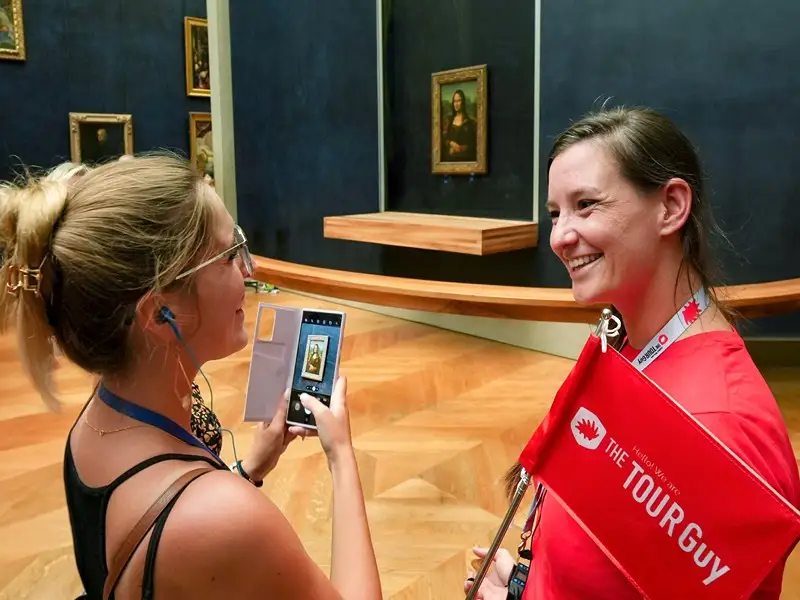
Secrets of the Louvre Museum Tour with Mona Lisa
2.5 Hours | €€
Get to know Venus de Milo, Liberty Leading the People, and Napoleon’s Coronation like never before.
Book Now!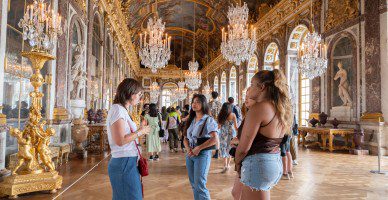
Palace of Versailles and Gardens Tour from Paris
3 Hours | €€
Skip the lines to the Hall of Mirrors with a friendly English speaking guide and roundtrip transport.
Book Now!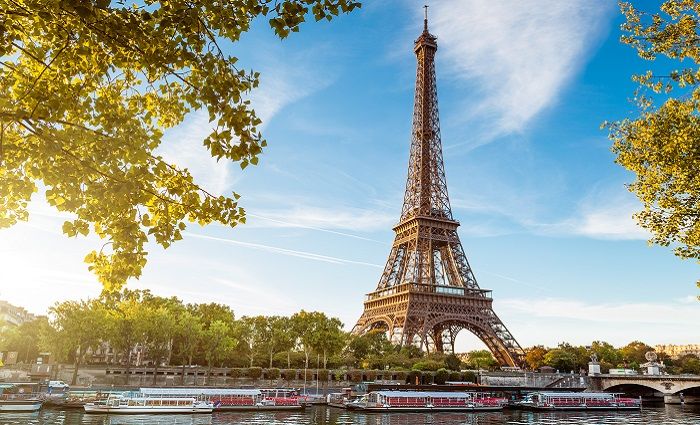
Privileged Access Eiffel Tower Tour with Seine River Cruise
2.5 Hours | €€
See beautiful Paris with second floor Eiffel Tower elevator tickets, a river cruise, and champagne.
Book Now!7. The Floor Scrapers
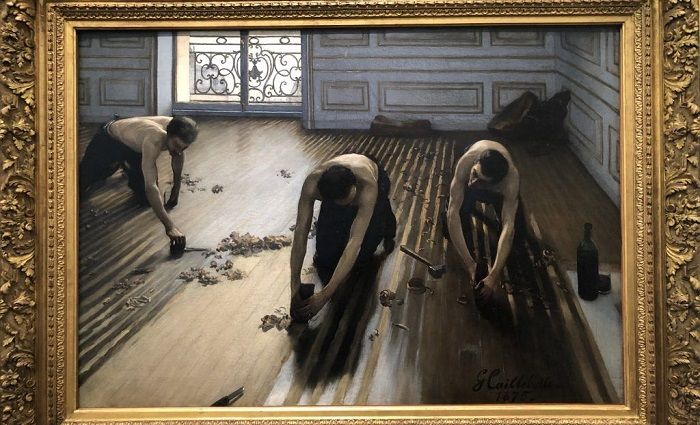
Gustave Caillebotte
This painting by Gustave Caillebot is a stunning example of Realism. It’s also one of the first examples of a representation of the working class in Paris. Before this time, the working class was almost exclusively portrayed as peasants in the field.
Gustave himself came from an affluent Parisian family who was more known for his generosity in buying other artists’ paintings (see Renoir). Only in the 20th century were his paintings more appreciated.
This work of art depicts three workers scraping the wooden floor in an apartment (supposedly, it was Caillebot’s studio). With light coming in from the window in the background, the painting conveys the back-breaking work of scraping a floor of its paint. You can also see many of the scraping tools they used together with an open bottle of cheap wine.
Caillebot was a classically trained painter, which you can see from the perspective of the painting. The bodies and movements of the workers are idealized. You witness the classical movements he used imitating ancient, Classical statues.
At the Salon of 1875, this painting was rejected for being too vulgar. At this point, he joined the impressionists and exhibited this painting again at the Impressionist Exhibition of 1876.
6. Arearea
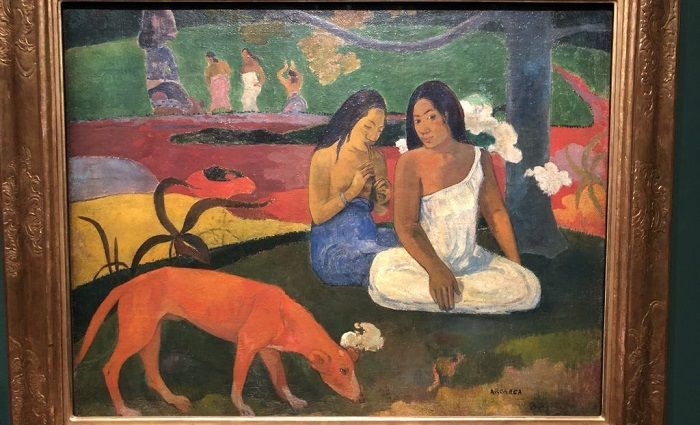
Paul Gauguin
Paul Gauguin’s life was as colorful as his Tahiti-themed paintings. Considered a post-impressionist artist, he is most famous for his paintings created during his first stay in Tahiti. True to the term of “starving artist,” he did not gain any fame during his lifetime. Unfortunately, he became famous long after his death.
The painting shows two local women in a seated position with a red dog in the foreground. In the background, you can see women praying to an indigenous Maori statue, which Gaugin blew up to be as big as an enlarged Buddha. It appears that this was not a real rite in Polynesia. So, by creating this, Gaugin idealizes the primitive way of life where man lives in a world protected by the Gods.
Upon returning to Paris, Gaugin submitted a series of paintings, including this one. In November of 1893, they were exhibted. Ideally, Gaugin wanted to show off his experience in Tahiti, but the exhibition didn’t go very well for him.
He was criticized on many points, one of which was that all the names of the paintings were in the Polynesian language. He received some sarcastic comments because of the fact that he painted a red collarless dog. In the end, divorced from his wife and disappointed with how things turned out in Paris, he decided to move back to Polynesia in 1895 and never returned.
5. Self Portrait
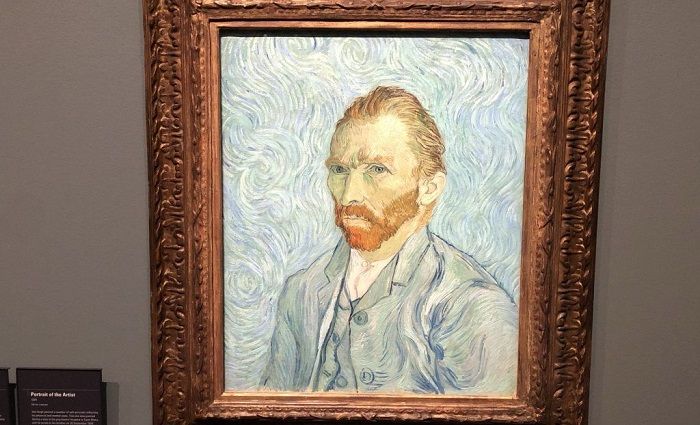
Vincent Van Gogh
This 1889 self-portrait by Van Gogh is one of over 40 he painted of himself in just a decade. Legend has it, he cranked out so many because he couldn’t afford models, so he ended up using himself as the subject. Smart, right? But this piece? It’s more than just another self-portrait—it’s a window into Van Gogh’s psyche.
You can immediately see the contrast here: the soft, pale blue background against the fiery red of his hair and beard, which seem to burn with intensity. His face is gaunt, almost hollow, and his green eyes—those piercing eyes—are a little sunken, carrying a quiet sadness. It’s haunting, really. What’s interesting here is the suit jacket—something a little more polished than his usual rough pea coat. Maybe it’s a sign he was trying to present himself differently, or maybe it’s just a moment of introspection.
There’s some debate among art historians whether this was his last self-portrait. In a letter to his brother Theo, Van Gogh wrote about this painting: “You will need to study [the picture] for a time. I hope you will notice that my facial expressions have become much calmer, although my eyes have the same insecure look as before, or so it appears to me.” That line says it all—calm on the surface, but you can still feel the uncertainty behind those eyes.
This isn’t just a self-portrait; it’s Van Gogh giving us a raw, unfiltered glimpse into the man he was at that moment in time. And that’s what makes it unforgettable.
Find Your Perfect Parisian Hotel
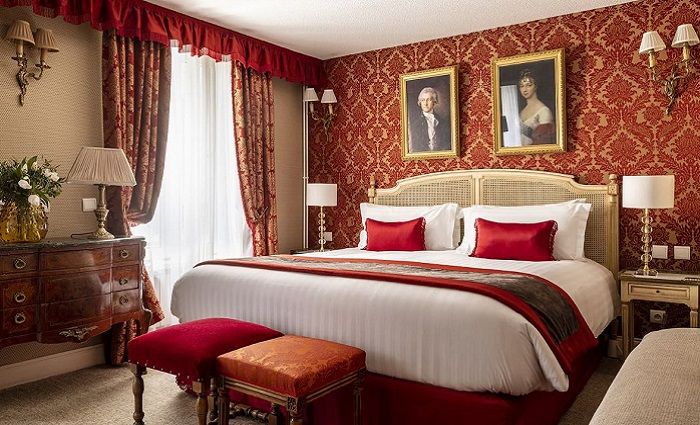
Hôtel de Seine ⭐⭐⭐
Saint-Germain-des-Prés • Period Décor
Excellent value for money, plus optional breakfast buffet and amenities for kids.
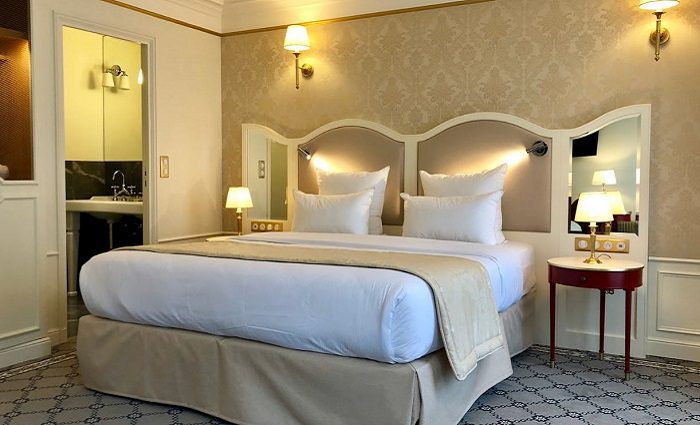
Hôtel Mayfair Paris ⭐⭐⭐⭐
1st Arrondissement • Fitness Center
Clean, cozy, and conveniently located near the Louvre.
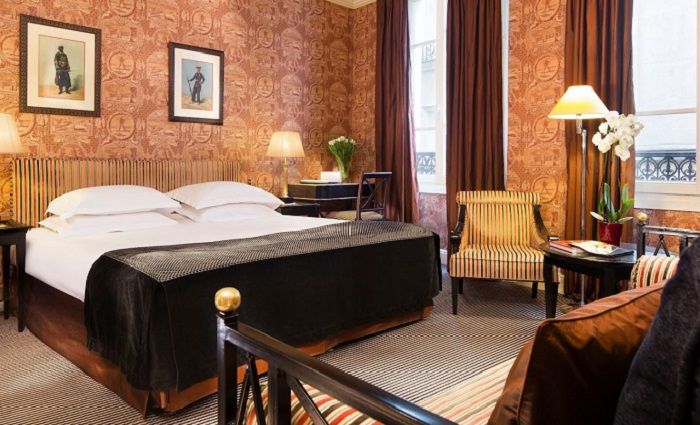
Hôtel Villa d’Estrées ⭐⭐⭐⭐
Latin Quarter • Stylish and Spacious
Classic hotel within 5 minutes from Pont Neuf, Notre Dame, and Ile Saint Louise.
4. Starry Night
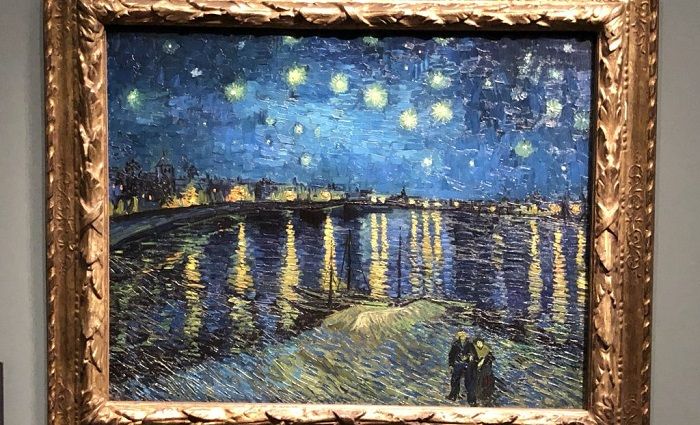
Vincent Van Gogh
Vincent Van Gogh is probably one of the most famous Impressionist painters of all time. He was actually Dutch and moved to France right in the middle of the exciting Impressionist movement. Starry Night was painted when he moved to Arles in Southern France in 1888.
The painting itself shows the Rhône River, which was only a few minutes from the house on Place Lamartine. The composition is very calm with the stars burning brightly, lighting up the sky. The lights from various buildings are reflected on the water, which illuminates the painting even more.
In the lower right-hand corner, there’s a couple in love walking along the river. Van Gogh painted another Starry Night, which you can find today in the MoMa in New York and the contrast is visible. The MoMa Starry Night is very violent in its colors and shows the mental state of Van Gogh. He had recently been institutionalized at a mental health institute.
3. Luncheon Grass
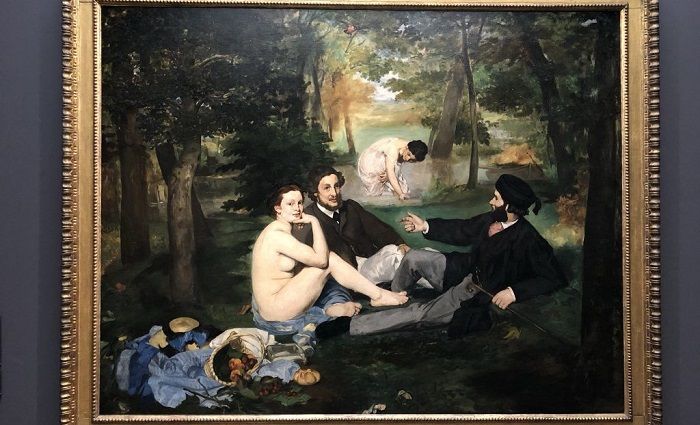
Edouard Manet
This unorthodox painting shot Manet into the spotlight in 1863 with the shocking figure of a nude woman, sitting with men having a picnic in the forest. Nude women were nothing new, but they had always been portrayed as a divine God (think of the Greek Aphrodite) and not as a regular woman.
Manet refused to be a conformist and go along with the tastes of the French Academy of Fine Arts. He wanted to paint everyday scenes and situations that, upon meeting others from the Impressionist movement, allowed a happy marriage between them all.
This was very risky since the Academy organized the salons where paintings were exhibited and were, therefore, the way to success. The painting was entered into the Salon des Refuses, which was an alternative salon for paintings that didn’t make it into the official Salon.
Shunned by some when it was introduced, over time the painting broke important barriers that had previously prevented taking Modern French painting to the next level.
The painting is huge in scale—81.9 by 104 inches. When you first look at it, it definitely makes a strong impression on you—positive or negative. In essence, we can thank Manet for pushing the envelope and pushing Modern French painting into a newfound freedom and reinvention of pictorial space.
2. Bal Moulin Galette
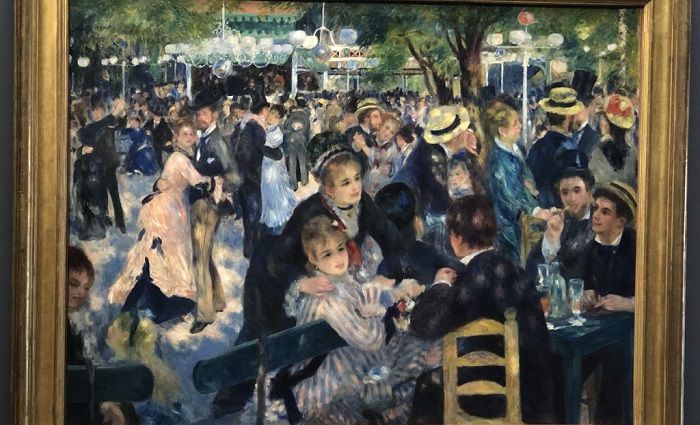
Auguste Renoir
This one’s a classic. Renoir’s Bal du Moulin de la Galette is one of his most iconic works, and it’s a gem of early Impressionism. There’s a lot happening here, but don’t worry—your eyes flow easily through the scene, thanks to the vivid colors and dynamic brushwork. It’s like a celebration of movement and life in one frame.
So, what’s the story behind the painting? The Moulin de la Galette was a popular spot at the Butte de Montmartre, back when Paris was still buzzing with that carefree, bohemian energy. On Sundays, people would gather to dance, eat the famous galette cakes, and soak up the vibe. The best part? Women got in for free (nothing new there, huh?). Rumor has it, even the more liberated ladies of the time would show up for the open-air revelry.
Renoir, totally hooked on the scene, rented a studio nearby just to soak it all in and capture the vibe perfectly. Sure, some critics weren’t into the softer, blurred brushstrokes at first, but the painting was ultimately a hit.
A cool side note: this piece was actually commissioned by fellow artist Gustave Caillebotte. After Caillebotte passed away, his debts were paid off with the painting, and it ended up in the hands of the French government. Pretty wild, right?
Top Paris Tours
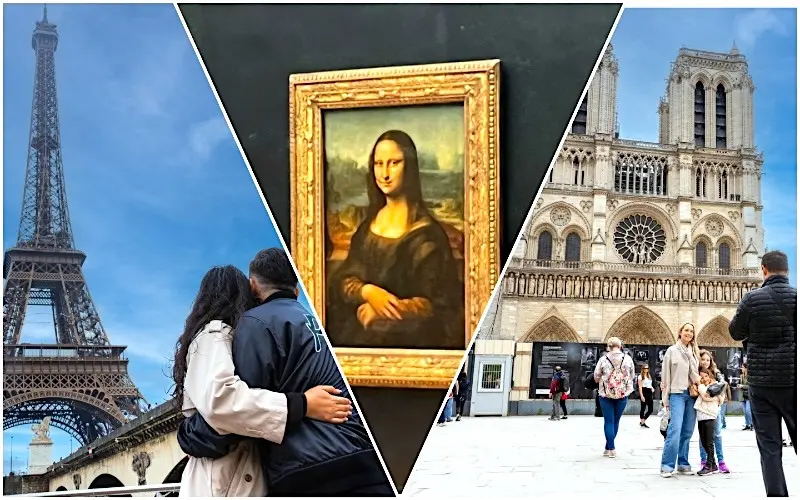
Paris in a Day Tour with Eiffel Tower, Louvre, and Notre Dame Cathedral
8 Hours | €€€
See the Mona Lisa, Sacre-Coeur, and a Seine River cruise with a friendly local guide.
Book Now!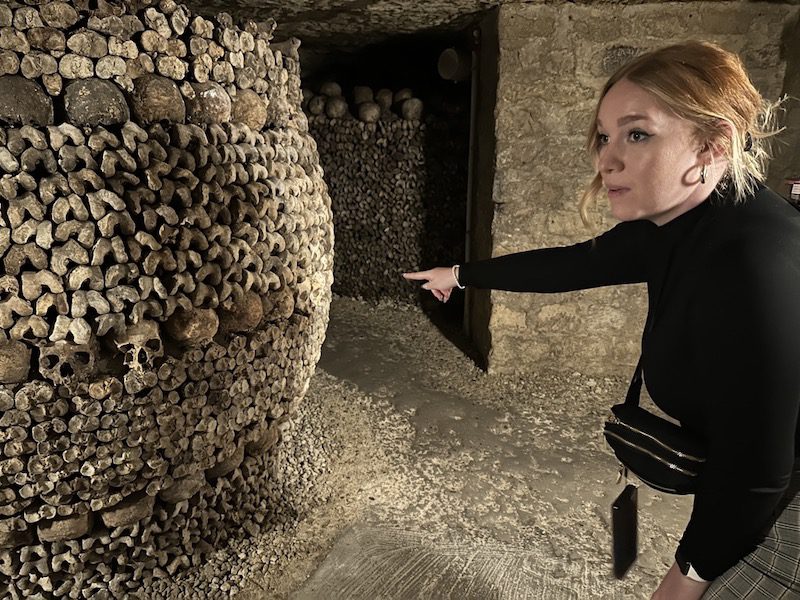
Paris Catacombs Tour with Secret Rooms & Privileged Access
1.5 Hours | €€€
Skip the line and gain exclusive access to secret parts of the Catacombs.
Book Now!
Semi-Private Musée d’Orsay Tour with Skip the Line Tickets
2 Hours | €€
Admire pieces by Monet, Renoir, Van Gogh, and more alongside an expert guide and semi-private group.
Book Now!1. Card Players
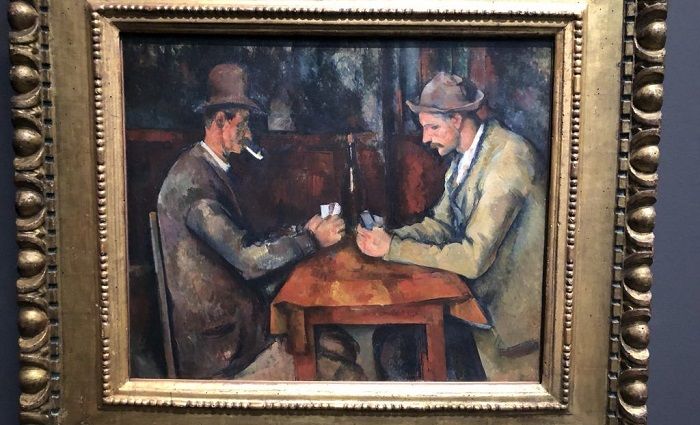
Paul Cezanne
This one’s a straight-up legend. The Card Players at the Musée d’Orsay is as famous as they come, and its raw, understated simplicity draws you in. You can feel the weight of the moment in every brushstroke. It’s the kind of painting that hits you with its quiet intensity and doesn’t need a lot of bells and whistles to make an impact.
Now, Cezanne was definitely influenced by a painting called Card Players by the Nain Brothers, which he would’ve seen while living in Aix in the late 1800s. But when you look at this piece, it’s clear what Cezanne brought to it. The focal point? That bottle sitting between the two players. The tavern they’re in? Could be anywhere in Paris, but it has that down-to-earth, middle-class vibe. The table’s stripped down, just a simple surface. And the two guys? They’re completely locked in, focused on the cards in front of them, thinking about their next move.
The Card Players series consists of five paintings, and this one at the Musée d’Orsay is the most minimalistic of the bunch. Some people even think there’s a deeper personal symbolism here, with Cezanne possibly portraying himself and his father, trying to win his approval for his art. A bit of psychological tension under the surface, right?
All in all, this painting isn’t just a scene of two guys playing cards—it’s got layers of emotion and history, and it’ll grab you whether you’re looking for it or not.
Not ready to book a tour? Find out how to visit the Musée d’Orsay.
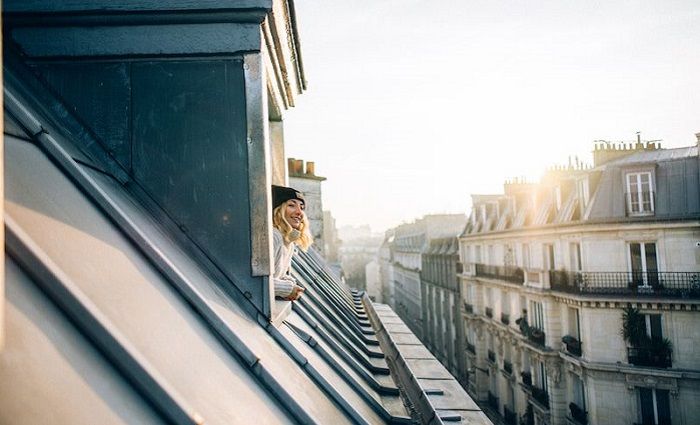
Where To Stay in Paris
With a city as magnificent as Paris, it can be hard to find the perfect hotel at the perfect price. Explore the best hotels and places to stay in these incredible neighborhoods in Paris.
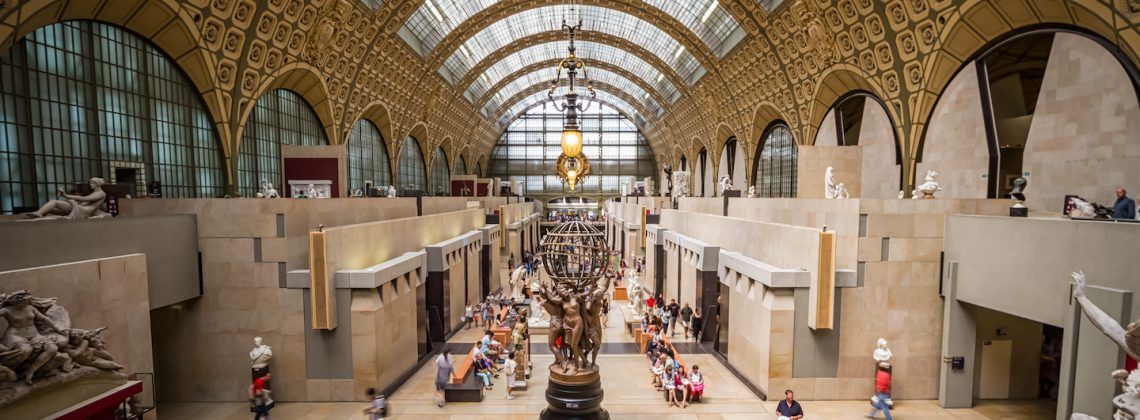
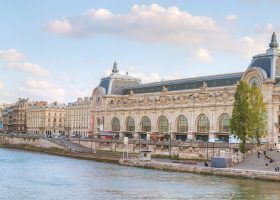
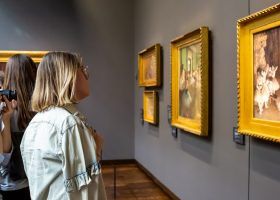
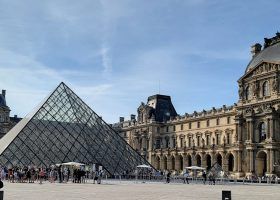


There is more to see then Impressionism. It’s way over hyped and it’s getting a little old.
You picks didn’t surprise me typical and boring. All paintings and Impressionist why.?